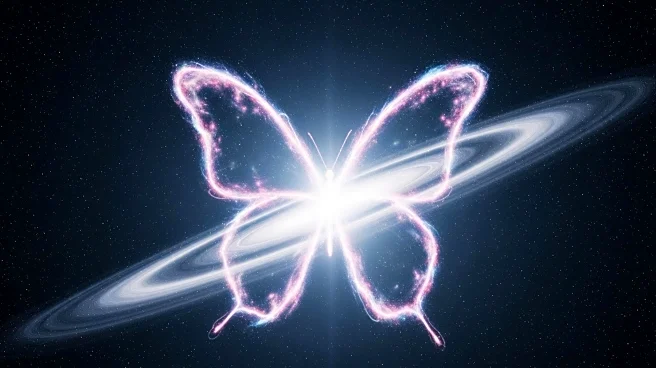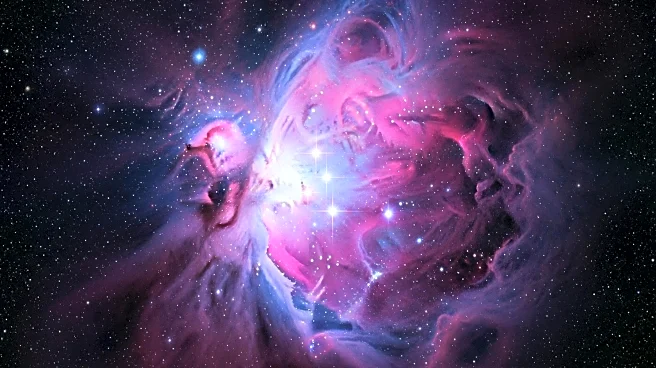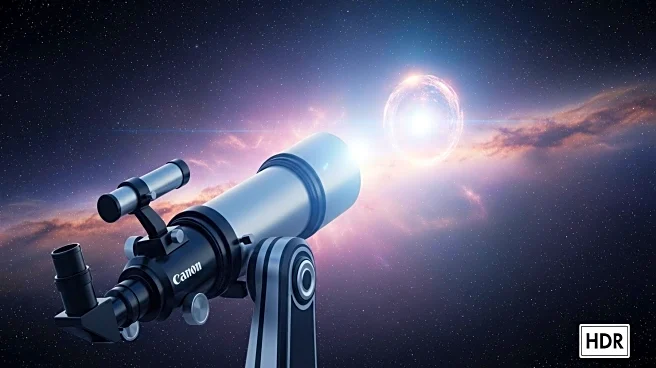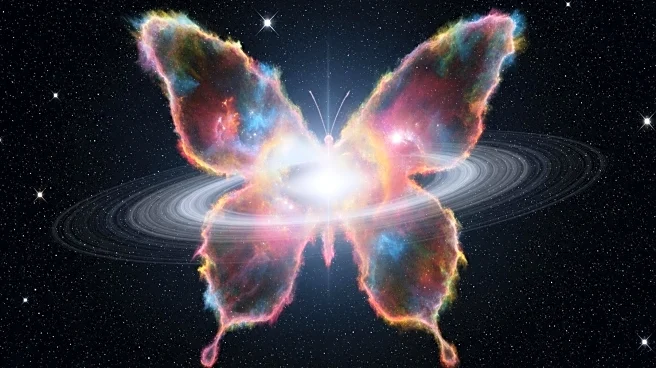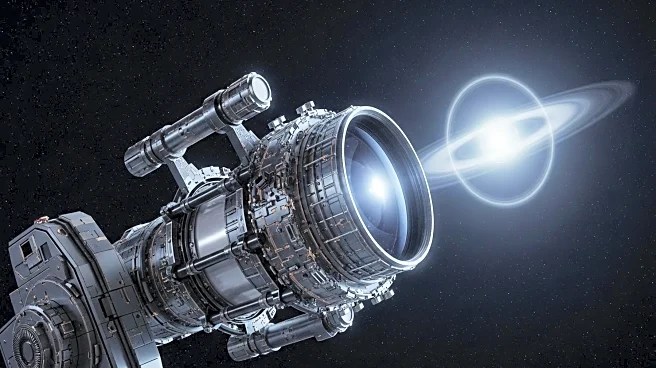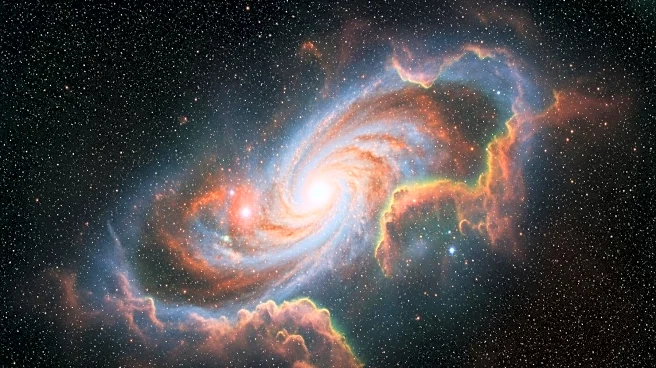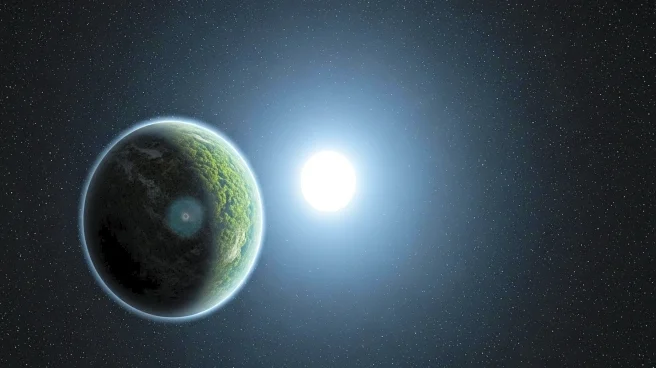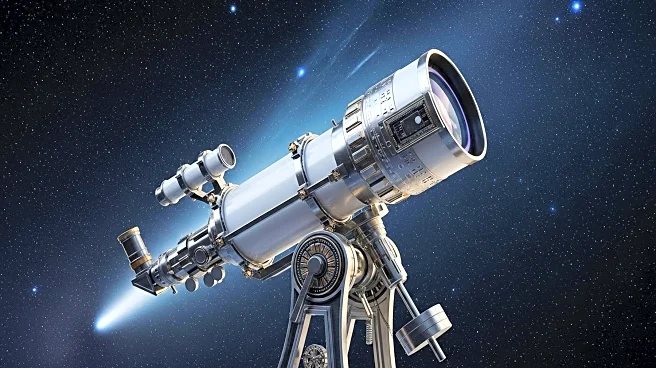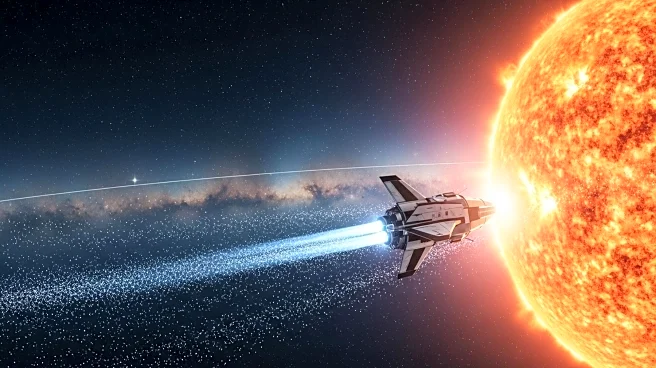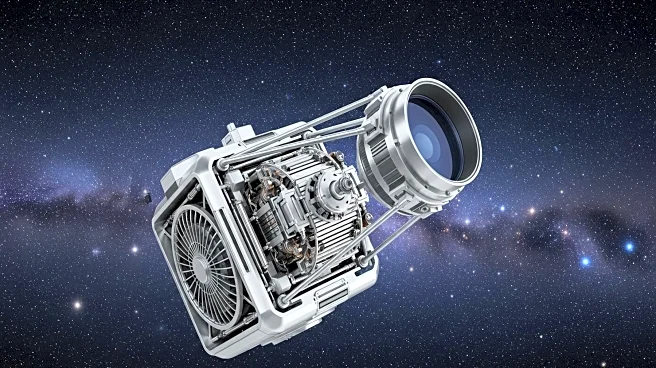What is the story about?
What's Happening?
The James Webb Space Telescope (JWST) has captured a striking image of a star known as IRAS 04302+2247, or the 'Butterfly Star,' located 525 light-years away in the Taurus constellation. This star is enveloped in a massive protoplanetary disk, a dense ring of gas and dust where planets are likely forming. The image, shared on August 29, 2025, combines optical data from the Hubble Space Telescope and new infrared data from JWST's Near Infrared Camera and Mid-Infrared Instrument (MIRI). The European Space Agency (ESA) describes the image as revealing a dark, dusty lane that divides the nebula, blocking the star's light while surrounding gas and dust scatter it. The protoplanetary disk is approximately 40 billion miles across, several times wider than the solar system.
Why It's Important?
This discovery is significant as it provides insights into the processes of planet formation, potentially offering clues about the early stages of our own solar system. The ability to study the thickness and dust distribution of protoplanetary disks helps astronomers understand how planets accumulate mass. The image's edge-on view allows scientists to examine the disk's structure, which is crucial for understanding the conditions that lead to planetesimal formation. The findings, published in The Astrophysical Journal, suggest that the inner disk may be warped or misaligned, offering a glimpse into the dynamic processes that shape star systems.
What's Next?
Future observations and studies using the JWST and other telescopes will continue to explore the Taurus Molecular Cloud, the closest star-forming region to the solar system. These efforts aim to deepen our understanding of star and planet formation, potentially leading to discoveries about the origins of life and the conditions necessary for habitable planets. As scientists analyze more data, they may uncover new phenomena that challenge existing theories about planetary system development.
Beyond the Headlines
The study of protoplanetary disks not only advances scientific knowledge but also raises questions about the potential for life beyond Earth. As researchers investigate the conditions under which planets form, they may identify environments conducive to life. This could have profound implications for the search for extraterrestrial life and the understanding of our place in the universe.
AI Generated Content
Do you find this article useful?
